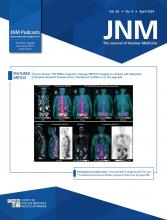Abstract
Inflammatory bowel disease (IBD) is a chronic relapsing and remitting inflammatory disease of the gastrointestinal tract. The diagnosis and monitoring of IBD is reliant on endoscopy which is invasive and does not provide information regarding specific mediators. Symptom flare in IBD is associated with increased activation of innate immune pathways. Immuno-PET approaches have previously demonstrated the ability to detect colitis, however direct comparison of antibodies targeted to innate immune mediators and cells have not been evaluated. We aimed to compare immuno-PET of antibodies to IL-1β and CD11b against standard 18F-FDG and MRI approaches to detect colonic inflammation. Methods: Colonic concentrations of IL-1β and myeloperoxidase (MPO) were determined by ELISA and colonic infiltration by CD11b+ CD3- innate immune cells were determined by flow cytometry and compared between healthy and dextran sodium sulphate treated colitic mice. PET of 89Zr-labelled α-IL-1β and α-CD11b, and 18F-FDG were compared by volume of interest and MRI by region of interest analysis. Imaging results were confirmed by ex vivo biodistribution analysis. Results: Colonic inflammation was associated with impaired colonic epithelial barrier permeability, an increase in colonic IL-1β and MPO concentrations, and increased CD11b+ CD3- innate immune cell infiltration into the colon. 89Zr-α-IL-1β and 89Zr-α-CD11b immuno-PET detected colonic inflammation, as did 18F-FDG, and all PET tracers were more sensitive than MRI. While 18F-FDG volume of interests correlated with colitis severity and a strong trend was observed with 89Zr-α-IL-1β, no correlation was observed for 89Zr-α-CD11b or MRI. 89Zr-α-IL-1β was distributed mainly to the gastrointestinal tract, while 89Zr-α-CD11b was distributed in more tissue types. Conclusion: Immuno-PET using antibodies directed to innate immune markers detected colonic inflammation, with 89Zr-α-IL-1β providing a more tissue specific signal than 89Zr-α-CD11b. Development of these technologies for human subjects will potentially provide a less invasive approach than endoscopy for diagnosing and monitoring IBD.
- Gastrointestinal
- Molecular Imaging
- Monoclonal Antibodies
- PET
- colitis
- immuno-PET
- inflammatory bowel disease
- innate immune system
- Copyright © 2018 by the Society of Nuclear Medicine and Molecular Imaging, Inc.







